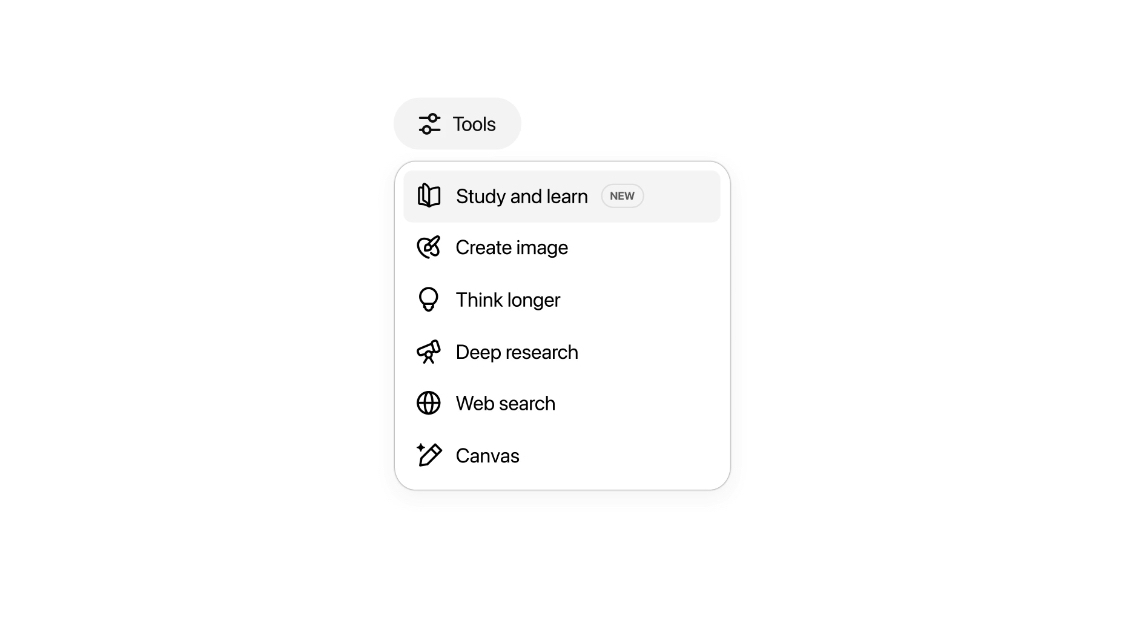OpenAI’s New Study Mode: A Smarter Way to Learn with ChatGPT
OpenAI has just rolled out Study Mode, a guided learning experience within ChatGPT that emphasises step‑by‑step engagement rather than instant answers. Let’s explore what’s new, why it matters, and what might come next.
What Is Study Mode?
- Guided questioning: Instead of just giving you the answer, ChatGPT asks thoughtful questions to help you think things through and come to your own conclusions.
- Step-by-step explanations: Information is broken down into clear, manageable chunks so it’s easier to follow and less overwhelming.
- Adjusts to your level: ChatGPT learns how much you already know and adapts its responses to match your understanding.
- Quick learning checks: Built-in quizzes and questions help you test what you’ve learned, with useful feedback along the way.
- Easy to turn on or off: You can switch Study Mode on or off at any time using the “Study” icon inside ChatGPT.
It’s available globally to Free, Plus, Pro, and Team users now, with rollout planned for ChatGPT Edu in the coming weeks.

How It Differs from the Traditional ChatGPT Experience
| Traditional ChatGPT | Study Mode (New) |
|---|---|
| Provides quick answers | Promotes active learning with guidance |
| Little context calibration | Tailored to your ability and goals |
| Answers may overwhelm | Structured, digestible explanations |
| Works as “answer engine” | Designed as a tutor or learning partner |
This isn’t about turning ChatGPT into a homework copier. It’s a deliberate shift toward guiding learning, not shortcutting it.

Why This Matters
- OpenAI is repositioning its educational role, shifting from being seen as a cheating tool to a learning ally.
- It’s part of a bigger competition: Google’s Gemini for Education and Khanmingo are all pushing for student and institutional trust in AI learning.
- Study Mode is based on educational science: Built with input from over 40 educational institutions, it integrates cognitive load management and real-time feedback.
My Take: A Step in the Right Direction
Study Mode is a smart move. Creating purposeful friction – encouraging reflection rather than spoon-feeding – could make ChatGPT a better learning companion. That said, the temptation to toggle it off is real, especially for younger or time-pressured users.

What OpenAI could add next:
- Admin or parental controls to lock Study Mode for students.
- Goal-setting and progress tracking for visible learning journeys.
- More visuals and interactive aids, especially for complex subjects.
Practical Recommendations
- Try it for real learning – especially when you want to understand, not just solve.
- Switch intentionally – use the toggle based on your learning goal.
- Engage with the prompts – the learning happens in the reflection, not the answer.
- Pair it with discipline – if you’re a teacher or parent, guide how and when it’s used.
Final Thoughts
Study Mode marks a thoughtful pivot in how ChatGPT supports education. It won’t transform learning overnight, but it lays the groundwork for AI as a genuinely helpful academic partner. I’ll be watching closely to see if it changes how students engage – and whether it finally quiets the “ChatGPT is just for cheating” narrative.